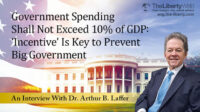Laying a Foundation
Happy Science after the "Financial Times": Its Unprecedented Path to a Global Religion (Part1)
The Financial Times featured a Japanese spiritual leader in an interview titled “Japan Bows To a New God” in 1991. He was Master Ryuho Okawa, the founder and spiritual leader of Happy Science, Japan’s most active spiritual movement. The article reported the rising popularity of the group and its characteristic teaching regarding how to gain wealth.
The article reported on the sensation that Happy Science had created. It “has had an extraordinary impact on Japanese society. The number of Happy Scientists has apparently grown ten-fold this year, while Tokyo taxis have been carrying stickers that promote the movement and a huge ‘RO’ zeppelin has been floating across shopping districts.”
It’s been almost a quarter a century since then. The new spiritual movement has grown to attract over 12 million members in no less than 100 countries. As Master Okawa has resumed his recording of spiritual messages and has been publishing them at a rapid speed since 2010, the foreign media has paid more attention to his work. The New York Times recently wrote about his spiritual message from Margaret Thatcher in its online edition, and other media have been starting to report on Master Okawa’s lectures.
Master Okawa assessed the current situation of Happy Science in Happy Science Studies from a Religious Studies Perspective: A Beginner’s Guide. Below is an excerpt:
From the viewpoint of religious studies, Happy Science’s doctrines will show that they are filled with the same kind of universality as the world’s major religions are. It is true that this might be hard to tell simply by examining each individual spiritual message but we can see that Happy Science’s teachings, as a whole, are filled with the same principles and universality that runs through the foundations of the world’s religions.
By “teachings with universality,” I refer to the “principle of happiness” as represented by the four-fold path of “love, knowledge, self-reflection and progress.” Such principles share universal aspects with other world religions, and in Happy Science, the pursuit of enlightenment – what we call the “exploration of the right mind” – has an eastern religious characteristic.
The idea of honest poverty tends to be a major part of religions, but we’re trying to produce people who can succeed financially or in business so as to fulfill our mission as a contemporary religion. It is actually very challenging to preach teachings which are based on economic and business principles with the idea that the “enrichment and prosperity of the adherents of this religion will, in turn, lead to the world’s salvation and help eradicate financial deficits and poverty.” […]
However, from when I first started this group as “President Okawa,” I stated that I would “preach the truth for the next half a century (“On the Inauguration of Happy Science,” November 13th, 1986), and declared that over the next fifty years I would consolidate the group’s doctrines and forms of activities and spread them throughout the word. I continue to believe this is how I should proceed. My intention is to create a religion that will last for the next three thousand years, and I firmly believe that I can create a model for development in our group that accords with this goal.
In this sense, I think an analysis of Happy Science from a religious studies perspective could look something like the following: “From teachings that contain an ever-increasing body of truths, a single wide river on course to become a world religion flows. In response to various incidents that have occurred in the course of its flow, I have sought to tread a pathway for this world religion while informing people of our opinions from the perspective of wisdom, which can change the world as it moves forward.”
(Happy Science Studies from a Religious Studies Perspective: A Beginner’s Guide)
Having preached over 2,100 times and published more than 1,400 books so far, Master Okawa’s mission hasn’t ended. He wants Happy Science to be a world religion that can bring salvation and happiness to all of the people of the world, who can share his faith in El Cantare, Earth’s highest God.
Below is a brief history of Happy Science’s emergence as a global religion.
Fighting against Prejudice
Today there’s no doubt that Happy Science is Japan’s top religion. Nevertheless, Happy Science’s success story hasn’t always been an easy road. It’s been series of innovations and fights against prejudices the public has had regarding new religions. Master Okawa founded Happy Science in 1986 as a means to convey the truth he discovered after he had attained a Great Enlightenment and psychic powers in 1981.
Although some media featured the new spiritual movement favorably, there has been a lot of hostility toward new religions in Japanese society, which leftish post-war education has fostered. The anti-religious movement in Japan has been very strong. In 1991, a gossip magazine published an article that bashed Happy Science based on ill-founded substantiations. Happy Science members fiercely protested it through street demonstrations (The Friday Incident).
The Aum Shinrikyo group’s terrorist activities reinforced anti-religious trends in Japan because the group’s members claimed that they were Buddhists. Aum followers produced toxic gases in sealed facilities and repeatedly abducted and killed those who opposed them. Aum spread sarin gas in a subway station in Tokyo in 1995, which killed 13 innocent people and wounded 6,000 commuters. Despite risks to his life, Master Okawa publically criticized Aum in his lectures, over and over up until the attacks, in order to warn the public of the cult’s dangerous dogma of mass murder.
Master Okawa spoke about the public’s reaction to Aum’s terrorism in a lecture titled “Dharma, Courage, and Politics” in 2009:
I was the only religious leader who repeatedly criticized Aum Shinrikyo for a few years from 1991 to 1995. Nobody else did. You can search all of Japan. I was the only one who was criticizing them all the way from 1991. […] The police at the time were very indecisive about investigating Aum. Since their prior two attempts to investigate them had turned out to be vein, they were in a situation where they’d never be able to investigate the cult if they had messed up again.
For that reason, the police were quite grateful that someone from within the religious circles supported the police and criticized Aum. At that time, our organization was often in close contact with the police. […] When Aum abducted Mr. Kariya, our organization handed out about a million flyers to call for the criminal investigation of Aum Shinrikyo.
As a result of the delayed, compulsory investigation, however, Aum carried out its sarin gas terrorist attack which targeted the Sakuradamon Gate area where the Tokyo Metropolitan Police Department was located. A few people lost their lives and many were injured. (This was a reference to the “Metro Sarin Gas Incident,” on March 20th, 1995. Twelve people were killed, and over 5,000 passengers and station staff were injured slightly).
But what would have happened had their arrests been another month late? Aum was planning to use small remote-controlled helicopters to spray sarin gas all over Tokyo with the aim of killing some 500 thousand to a million people. It was actually a close call. They were arrested just in time.
Afraid of such tragedies taking place, I pushed the police, and asked them, “Why has the investigation proceeded so slowly?” […] I continually criticized Aum Shinrikyo for five years, and for that reason they committed several failed assassination attempts on me. I have had a pistol aimed at me, and lethal gas called VX even almost killed me in my car.
At the time, I was working at the Kioicho-building in the Chiyoda ward, and Aum members snuck into the parking lot where they put the VX gas in my car’s vents. A newspaper reported “Ryuho Okawa’s Assassination Attempt” in its evening edition. I told them though, “Please, no. This is grotesque. Please don’t report on it,” in order to prevent the article from appearing in other media.
We criticized the Aum cult at the risk of our own lives, but the results of our activities were disappointing, indeed. After the series of events in 1995, the trend in public opinion shifted to “religion is bad.” The Parliament revised the Religious Corporation Act, claiming that they had to keep a better eye on religions more. It tried to make the activities of religious groups more transparent.
I was disappointed that the Parliament revised the law without even mentioning there was a religious group that eagerly worked to solve the Aum problem. Afterwards, I went into “retreat” for a while, and I worked on consolidating the internal structure of our organization such as at the head temple. I distanced myself from politics.
Despite Master Okawa’s unselfish efforts to prevent Aum’s plot to commit genocide, Happy Science suffered in the public’s backlash against religious groups. Therefore, Happy Science focused on the laying of the foundation of their religious activities throughout the following decade.



















